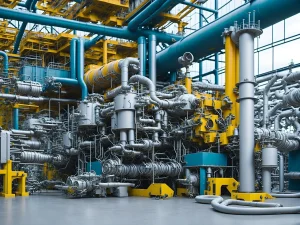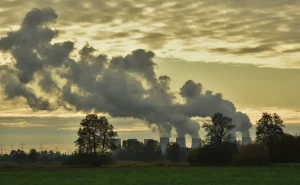Ozone: friend or foe? This comprehensive guide explores the science behind ozone, its presence in the atmosphere, and its impact on both our health and the planet. Learn about the good, the bad, and the environmental implications.
Ozone: A Tale of Two Layers – Friend and Foe in the Atmosphere
Ozone (O) – a gas molecule consisting of three oxygen atoms – plays a crucial role in the health of our planet. But ozone isn’t uniformly distributed. It exists in two distinct layers of the atmosphere, with vastly different effects:
- Stratospheric Ozone: The “good” ozone resides in the stratosphere, the atmospheric layer located roughly 12 to 50 kilometers above Earth’s surface. This layer acts as a protective shield, absorbing harmful ultraviolet (UV) radiation from the sun, safeguarding life on Earth from its damaging effects.
- Tropospheric Ozone: The “bad” ozone resides in the troposphere, the layer closest to Earth’s surface. This ground-level ozone is a pollutant, a byproduct of chemical reactions involving sunlight and pollutants emitted from vehicles and industrial processes. Tropospheric ozone irritates the lungs and contributes to smog formation, impacting air quality and human health.
Understanding the science behind these two ozone layers is essential for appreciating the complex role ozone plays in our environment.
Stratospheric Ozone: The Guardian Angel of Earth
The stratospheric ozone layer acts as a natural sunscreen, filtering out harmful ultraviolet B (UVB) radiation from the sun. UVB radiation can damage DNA, leading to increased risks of skin cancer, cataracts, and immune system suppression. The ozone layer acts as a crucial barrier, ensuring life on Earth can thrive without being bombarded by this harmful radiation.
The Delicate Balance:
The stratospheric ozone layer is a delicate balance. Certain human-made chemicals, like chlorofluorocarbons (CFCs) used in refrigerants and aerosols, can deplete the ozone layer. This depletion allows more UVB radiation to reach Earth’s surface, increasing the risk of skin cancer and other health problems. International treaties like the Montreal Protocol have been instrumental in phasing out ozone-depleting substances, helping to repair the ozone layer.
Tropospheric Ozone: The Villain in the Lower Atmosphere
Tropospheric ozone, on the other hand, is a pollutant. It’s formed when sunlight interacts with nitrogen oxides and volatile organic compounds (VOCs) emitted from vehicles, industrial facilities, and some natural sources. These pollutants react in the presence of sunlight, leading to the formation of ground-level ozone.
Health Impacts of Tropospheric Ozone:
- Respiratory Problems: Tropospheric ozone irritates the lungs, causing coughing, wheezing, and shortness of breath. It can worsen asthma symptoms and increase susceptibility to respiratory infections.
- Reduced Lung Function: Exposure to ozone can damage lung tissue and reduce lung function, leading to chronic respiratory problems.
- Inflammation: Ozone exposure can trigger inflammation in the airways, further compromising respiratory health.
The Environmental Impact of Tropospheric Ozone
Tropospheric ozone also poses a threat to the environment:
- Decreased Plant Growth: Ozone can damage leaves and hinder plant growth, impacting agricultural yields and forest health.
- Smog Formation: Tropospheric ozone is a key component of smog, which reduces visibility and contributes to air pollution.
Monitoring and Managing Ozone Levels
Scientists monitor ozone levels in both the stratosphere and troposphere. Ground-level ozone levels can vary significantly based on weather conditions and pollution sources. Air quality monitoring stations track ozone levels, and many countries issue air quality alerts when ozone levels are high.
Strategies to Reduce Tropospheric Ozone:
- Reducing Emissions from Vehicles: Promoting stricter emissions standards for cars and trucks can significantly lessen ozone precursors.
- Controlling Industrial Emissions: Regulating industrial facilities to minimize nitrogen oxide and VOC emissions can help reduce tropospheric ozone formation.
- Promoting Renewable Energy Sources: Transitioning to cleaner energy sources like solar and wind power can reduce air pollution and indirectly decrease ozone levels.
Living with Ozone: Protecting Yourself and the Environment
While the depletion of the stratospheric ozone layer poses a global challenge, there are steps we can take to minimize the impact of tropospheric ozone on our health and environment:
- Monitor Air Quality Reports: Stay informed about air quality conditions in your area, particularly ozone levels. Limit outdoor activities during peak ozone hours (typically midday).
- Reduce Personal Vehicle Use: Opt for carpooling, public transportation, cycling, or walking whenever possible. This reduces emissions and helps improve overall air quality.
- Refuel When Cooler: Refuel your car in the evening or early morning when temperatures are cooler. Gasoline vapors contribute to ozone formation, and refueling during cooler hours helps minimize emissions.
- Maintain Your Vehicle: Regularly maintain your car to ensure it operates efficiently and emits fewer pollutants.
- Choose Green Cleaning Products: Using eco-friendly cleaning products reduces VOC emissions that contribute to ozone formation.
- Support Clean Energy Initiatives: Advocate for policies that promote renewable energy sources and stricter emission regulations.
By taking these steps, we can collectively reduce our impact on air quality and contribute to a healthier environment.
Conclusion: Striking a Balance with Ozone
Ozone, a single molecule with two distinct faces, plays a complex role in our atmosphere. Understanding the “good” ozone in the stratosphere and the harmful effects of “bad” tropospheric ozone is crucial for protecting ourselves and the planet. Through international cooperation, technological advancements, and individual actions, we can strive for a healthier atmosphere where the protective shield of stratospheric ozone remains strong while minimizing the harmful impacts of tropospheric ozone on our health and environment.
Looking for more information on air quality? Check out our blog on “Don’t Get Hazed by Myths: Debunking 5 Common Misconceptions About Air Pollution” for a deeper dive into air quality concerns and solutions.
Let’s work together to breathe easier and ensure a healthy future for generations to come.



